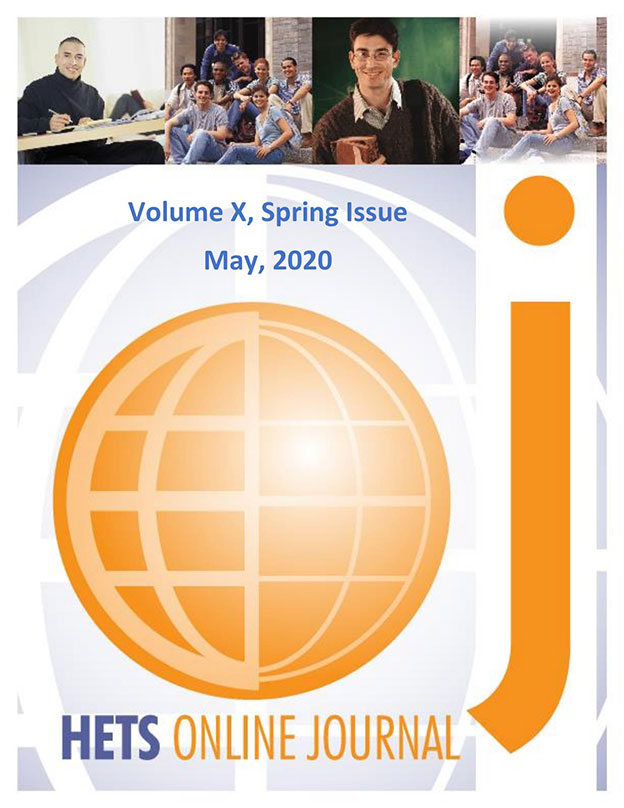Teaching with an Online MLA Citation Module at a Hispanic and Minority Serving Community College: Design, Implementation, and Results
DOI:
https://doi.org/10.55420/2693.9193.v10.n2.18Keywords:
Modern Language Association, MLA, citation manual, online learning module, information literacyAbstract
This article shares the design considerations, implications, and data analysis of an MLA citation online module created using Softchalk e-learning software. Based on research on how to best meet the needs of the diverse, multilingual, and English language learner students at the author’s college, key to the module’s design was using a “flipped” approach, ease of use for students as well as faculty, multiple types of review activities, and a positive rhetorical frame of participation in a scholarly community. Statistical analysis of data collected showed the module to be effective, especially for students who knew little about MLA citation to begin with and implies that such modules may help to close gaps in student knowledge created by cultural and linguistic bias.
Metrics
References
Association of College and Research Libraries. (n.d.-a). Information Literacy Glossary. http://www.ala.org/acrl/issues/infolit/overview/glossary
Association of College and Research Libraries. (n.d. -b). Framework for Information Literacy for Higher Education. http://www.ala.org/acrl/standards/ilframework
Belter, R. W., & du Pré, A. (2009). A strategy to reduce plagiarism in an undergraduate course. Teaching of Psychology, 36(4), 257–261. https://doi.org/10.1080/00986280903173165
Bergmann, J., & Sams, A. (2012). Flip your classroom: Reach every student in every class every day. International Society for Technology in Education.
Blake, J., Bowles-Terry, M., Pearson, N.S. and Szentkiralyi, Z. (2017). The impact of information literacy instruction on student success: a multi-institutional investigation and analysis. Central Universities Library Research 1-27. http://scholar.smu.edu/libraries_cul_research/13/
Bradley, E. G. (2015). Using computer simulations and games to prevent plagiarism.
Journal of Education Technology, 44(2), 240-252. https://doi.org/10.1177/0047239515617653
Buckley, C. (2015). Conceptualising plagiarism: using Lego to construct students' understanding of authorship and citation. Teaching in Higher Education, 20(3), 352-358. https://doi.org/10.1080/13562517.2015.1016418
Conley, T., & Gil, E. (2011). Information literacy for undergraduate business students: Examining value, relevancy, and implications for the new century. Journal of Business & Finance Librarianship, 16(3), 213–228. https://doi.org/10.1080/08963568.2011.581562
“Diversity...[rest of entry removed for anonymity]
Gonzales, A. L., McCrory Calarco, J., & Lynch, T. (2018). Technology problems and student achievement gaps: A validation and extension of the technology maintenance construct. Communication Research. https://doi.org/10.1177/0093650218796366.
Gratch-Lindauer, B. (2007). Information literacy-related student behaviors: Results from the NSSE items. College & Research Libraries News, 68(7), 432-441. https://doi.org/10.5860/crln.68.7.7838
Haras, C., Lopez, E. M., & Ferry, K. (2008). (Generation 1.5) Latino students and the library: A case study.” The Journal of Academic Librarianship, 34(5), 425–433. https://doi.org/10.1016/j.acalib.2008.06.004
Jamieson, S. (2017). What the citation project tells us about information literacy in college composition. In B. D'Angelo, S. Jamieson, B. Maid, & J.R. Walker, J. R. (Eds.), Information literacy: Research and collaboration across disciplines (pp. 115-138). WAC Clearinghouse & University Press of Colorado.
Johnston, N. (2010). Is an online learning module an effective way to develop information literacy skills? Australian Academic & Research Libraries, 41(3), 207–218. https://doi.org/10.1080/00048623.2010.10721464
Kvashnina, O.S., & Martynko, E.A. (2016). Analyzing the potential of flipped classroom in ESL teaching. International Journal of Emerging Technologies in Learning, 11(3), 71-73. http://dx.doi.org/10.3991/ijet.v11i03.5309 O.S.
Li, K., Li, Y., & Franklin, T. (2016). Preservice teachers’ intention to adopt technology in their future classrooms. Journal of Educational Computing Research, 54(7), 946–966. https://doi.org/10.1177/0735633116641694
Lumpkin, A. L., Achen, R. M., & Dodd, R. K. (2015). Student perceptions of active learning. College Student Journal, 49(1), 121–133.
Roberge, M., Siegal, M., & Harklau, L. (2009). Generation 1.5 in college composition: Teaching academic writing to U.S.-educated learners of ESL. Routledge.
Rockman, Ilene. (2003). Information literacy, a worldwide priority for the twenty-first century. Reference Services Review. 31. 209-210. https://doi.org/10.1108/00907320310486791.
Santos, M. (2017). An online tutorial in support of english language learners. Hispanic Educational Technology Services Online Journal, 8(1). http://hets.org/ejournal/2017/11/15/an-online-tutorial-in-support-of-english-language- learners/
Shapiro, J.J. & Hughes, S.K. (1996). Information literacy as a liberal art: Enlightenment proposals for a new curriculum. Educom Review, 31(2), 31-36. https://www.educause.edu/ir/library/html/erm/31231.html.
Sokoloff, J. (2012). Information literacy in the workplace: Employer expectations. Journal of Business & Finance Librarianship, 17(1), 1–17. https://doi.org/10.1080/08963568.2011.603989
Thonus, T. (2003). Serving generation 1.5 learners in the university writing center. TESOL
Journal, 12(1), 17–24. https://doi.org/10.1002/j.1949-3533.2003.tb00115.x
Warner, R. (2011). Referencing as a threshold concept. The American University in Cairo TESOL Journal, Special Issue for the Nile TESOL Skills Conference Proceedings, 141- 146.
Downloads
Published
How to Cite
Issue
Section
License
Copyright (c) 2022 Rob McAlear

This work is licensed under a Creative Commons Attribution-NonCommercial-ShareAlike 4.0 International License.
Open Access Policy Statement
HETS Online Journal has adopted an open access policy and provides immediate access to its content free of charge to the reader. The journal does not pass on the cost of publication or submission of manuscripts, known as an Article Processing Charge (APC), to authors.
HOJ is licensed under CC-BY-NC-SA.


